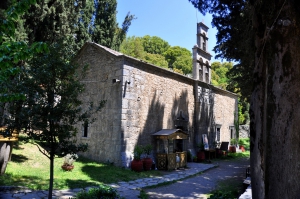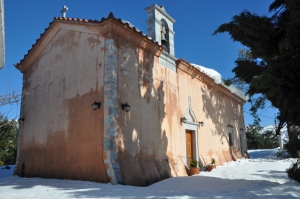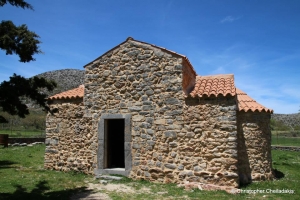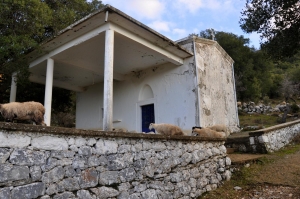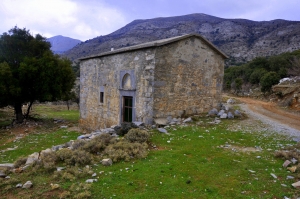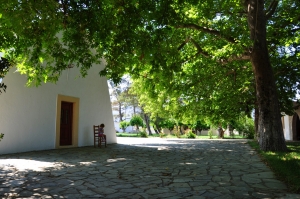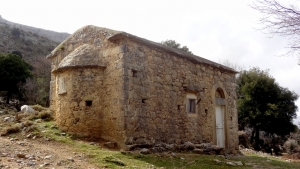The monastery of Vidiani is located at the foot of the mountain Louloudaki, near the village of Kato Metohi in Lassithi Plateau. Access is very easy, as the peripheral road of the plateau runs just next to it.
The Monastery of Panagia Kroustallenia is built on a small hill covered with oak trees near the villages of Agios Konstantinos and Marmaketo in Lassithi Plateau. It is one of the most historical monasteries of Crete and is always worth a visit.
The church of Agio Pnevma (the Holy Spirit) is a two-aisled basilica in the northwest corner of the plateau. With the addition of the second aisle, it now looks like a three-aisled church facing north, with the middle aisle higher than the others. The oldest aisle is dedicated to the Transfiguration and dates from the Venetian period.
After the lifting of the ban on cultivation of the Lassithi Plateau by the Venetians, they left the land to friend-refugees from the Peloponnese. Peloponnese was occupied by the Turks since the 15th century.
At this place operated during the Turkish Era a small male monastery dedicated to the Holy Apostles. When in 1823 Hasan Pasha attacked the Plateau from this side after having burnt Kritsa, his troops passed from here and destroyed the monastery.
Amid the fertile plain of Lassithi, among potato crops and the characteristic metal windmills of the plateau, we meet the temple of Saint John Kambitis (or Mesokapiditis) which means Saint John of the Plain. The temple is dedicated to St. John the Baptist and is the largest pilgrimage of the province of Lasithi.
The simple temple of Saint John the Baptist is located at the small plateau of Aloida, in the region of Mesa Lassithi, at an altitude of 1140 meters in the Dikti mountain range. At that point, next to a spring with fresh water, the chieftain Kapetan Kazanis and his men found shelter after 1821, from where they roamed against the Ottomans.











